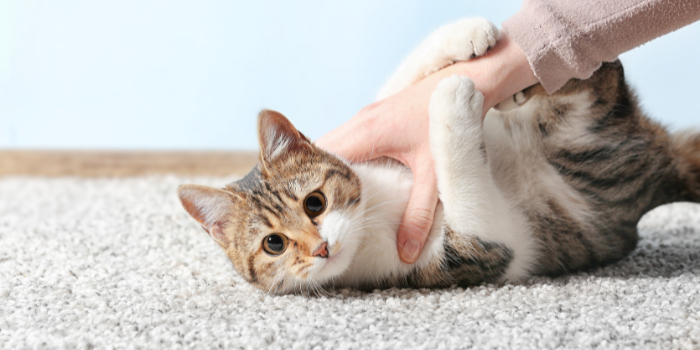Chronic kidney disease (CKD) is common in cats, affecting 30-40% of cats over ten years of age.
Here are four important facts to know about feline CKD.
1. Symptoms of early CKD may be mistakenly attributed to “normal aging”
Cats in the earlier stages of CKD usually show relatively subtle signs such as gradual weight loss and reduced coat quality. They may also be noted to be drinking and urinating larger amounts. Only once two-thirds of normal kidney function is lost will affected cats start to develop more obvious symptoms such as nausea, vomiting and bad breath.
Early CKD can be detected on blood and urine tests, which is why we recommend 6-12 monthly screening checks for cats ten years of age and older.
2. CKD can lead to dangerously high blood pressure
CKD is one of the most common causes of hypertension (high blood pressure) in cats. If left untreated, hypertension can damage the eyes and heart and hasten kidney function deterioration. It’s a good idea for cats with CKD to have their blood pressure checked at least every six months.
3. CKD can lead to urinary tract infections
Because cats with CKD have less concentrated urine, they are predisposed to urinary tract infections. We may therefore suggest routine urine tests in pets with CKD.
4. CKD can be managed with good medical care
With proper management, most cases of CKD will progress very slowly, allowing the pet and owner to enjoy several more years of good quality time together. Hooray!
Management usually involves:
- A therapeutic diet
- The maintenance of good hydration
- The supplementation of certain nutrients
- The management of any secondary hypertension or urinary tract infections
More advanced cases may also require treatment for nausea or anaemia.
If you would like to have your cat’s kidney function checked, please contact our kidney-careful veterinary team.

